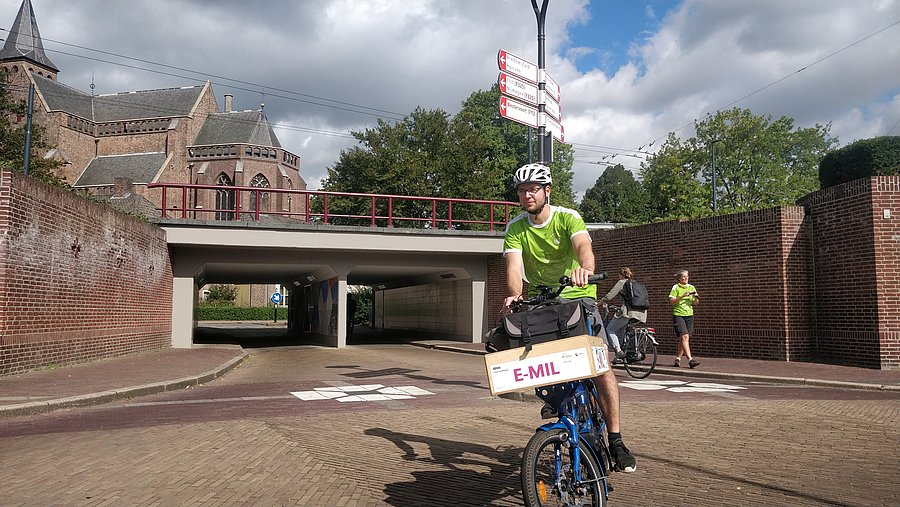ENTLASTA - Design elements and networks for cargo bikes in urban traffic

Cargo bikes are becoming increasingly vital in urban transport, serving both freight and passenger needs. The Federal Ministry for Transport and Digital Infrastructure, in its update of the National Cycling Plan, cites studies suggesting that approximately 20% of urban freight transport can be effectively handled by cargo bikes. In response to this trend, the public sector is actively promoting the acquisition of cargo bikes for both private and commercial purposes.
The market now offers various cargo bike models, including small load bikes (KLR) for children and freight (payload < 150 kg) and heavy load bikes (SLR) designed for payloads exceeding 150 kg and a load volume of more than 1 m³. These bikes commonly feature battery electric assistance, contributing to an increased variance in riding dynamics and dimensions within the bicycle fleet. The diversity in bicycle types raises challenges for cycling infrastructure, especially as bicycle traffic evolves with new trip purposes. Cities must address the task of reviewing, aligning, and expanding their cycling infrastructure to ensure functional and traffic-safe conditions for all road users.
The ENTLASTA project aims to:
- Review and enhance planning procedures for the entire cycling network to facilitate harmonized planning for all relevant cycling travel purposes.
- Evaluate bicycle infrastructure facilities to meet the requirements of both heavy-duty and light-duty bicycles and provide design recommendations.
The project's goal is to ensure the compatibility, conflict-free operation, and safety of cargo bicycles for all road users. It also aims to offer functional, comfortable, and safe use for cargo bike users. Network planning and infrastructure development mutually influence each other, with existing infrastructure restrictions shaping route formations and strategic expansion based on this network planning.
Freight bicycle traffic is diverse, requiring consideration of relevant behavioral parameters and planning based on the bicycles used and spatial distribution of source and destination points. The ENTLASTA project aims to develop connection-related quality standards for network planning, considering factors like detour, air line speeds, and longitudinal gradients. The further developed network planning procedure will be applied in three cities to ensure practical relevance in collaboration with city administrations.
The project will review and evaluate planning specifications for infrastructure elements and guidance forms for their suitability for small- and heavy-duty bicycles. Certain infrastructure elements may lead to conflicts and safety concerns, especially with heavy-duty bicycles, depending on factors like width and surface condition.
The identified requirements for the network concept and individual design elements will be translated into concrete proposals for updating relevant technical regulations of the Forschungsgesellschaft für Straßen- und Verkehrswesen (FGSV). Additionally, the project's findings on network planning for cargo bikes, suitable infrastructure elements, and safety-related recommendations will be processed into a practical guide for municipalities. This guide aims to provide timely assistance for municipal planning practices, generating immediate benefits.

